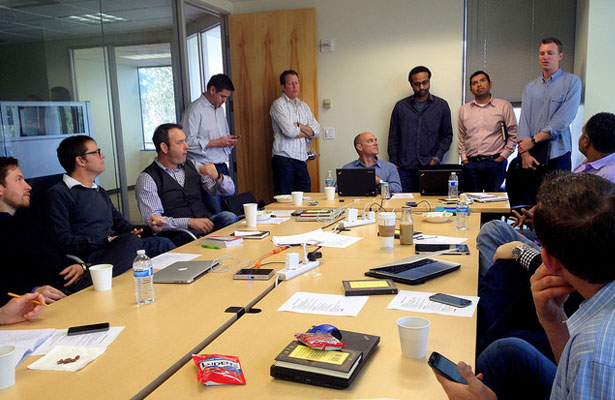
In the team coaching work that I do, I frequently see teams that are so busy chasing all the “stuff” that is the basis of their revenues or goals – what I call working “IN” the business – that they never find time to consistently and thoroughly work “ON” their business to improve how they do what they do.
Working “ON” the business includes the many HOWs of managing the day-to-day flow of the efforts of everybody on the team. Russell Bishop wrote an interesting book on this subject, entitled Workarounds That Work: How to Conquer Anything That Stands in Your Way at Work, where on pg. 22 he asks:
What could you do that would make a difference in your job that requires no one’s approval, cooperation, support, or agreement other than your own?
In his book, he shares this model about all the “Stuff” we have to deal with and suggests that when working “ON” your business, control what you can control.
In Mr. Bishop’s model (pg. 17) he defines each element as follows:
- Control: The inner circle contains all those things that you can control yourself, regardless of what others may say or do. While small, this circle does include choices you can make all on your own.
- Influence: The second layer relates to those areas of performance where you may be able to be impactful, but you require the approval, cooperation, support, or agreement of another. There may be many more areas here where you could imagine improvement, but it’s not just up to you.
- Respond: This outer layer represents the rest of life. Using the example of the weather, you can’t really do anything about the rain other than decide how you respond. You can stay indoors, put on a raincoat, use an umbrella, or just decide that getting wet is OK. This is where most of life takes place: competitors do what they do, the economy moves the way it moves, and change just happens.
What resonated with me about this model is that our biggest opportunity – if we make time to work on it – is to improve as much as possible about all elements of our own work processes and those of our team. If you can consistently improve what you can control, you will be able to influence other things. If you are responding repeatedly to things that force you to work around inefficient or ineffective processes or procedures that you could improve if you invested the time to do so, your pains are somewhat self-inflicted.
Bishop challenges his readers by claiming that there may be a much as 20% of what’s done that need not be done – anymore. On pg. 35 he advises to start by reviewing your list of tasks, projects, or to-dos, and then ask these three questions about each item you have cited:
- Who needs this done?
- Why do they need it?
- What difference will it make?
This is a handy little low-tech questioning process that may prove exceptionally valuable if done regularly—say, monthly.
Your team will appreciate that you know how to and are committed to ensuring that the team consistently is focused on what matters most. When the organization shifts focus or direction, always be ready to ask what should we continue to do, what do we need to start doing and, most importantly, what should we STOP doing?
As you consider this, ask yourself these questions:
- Do I help my team reflect on what we can do to control our workload and workflow?
- Can doing this assist me in becoming more influential in managing our contributions to the organization?
- Can I use this effort to provide opportunities for members of my team to step up and lead as well?
- Lastly, and most importantly, am I afraid to step up and suggest we STOP doing things that do not matter anymore?
I look forward to your thoughts and comments. Please share your experiences or ideas with in the comments section at the end of this post.
Photo Credit: Jim Larrison / CC



Leave a Reply